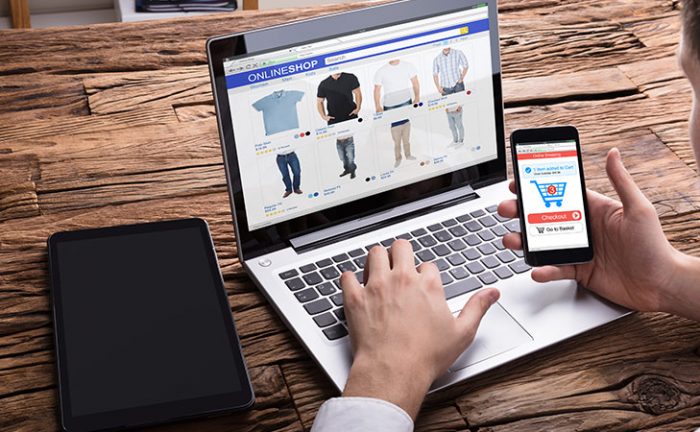Boosting Shoppable Video With Omnichannel Retail

Whether it’s an online store or mobile app, e-commerce is essential to a healthy retail business. But without bringing every channel together for a consistent user experience, your digital properties might not be performing as well as they could.
This is where omnichannel retail comes in. Omnichannel retail makes the separate parts of your business work together for a seamless experience. A user can then move between your platforms and outlets with all their data, preferences, and orders intact.
What Is Omnichannel Retail?
To explain this, let’s use a company that everyone is familiar with – Amazon. Think about your Amazon account. It doesn’t matter if you browse their store on desktop, mobile, or even your Kindle. You’ll get the same features and all your user data is right there for you.
This is a basic example of omnichannel retail, but it goes further than that. Modern ideas of omnichannel retail now include:
- Live content
- Social media feeds
- Post-sale
It’s vital to tie in your physical product strategy as well. Let’s continue the example: say you buy something from your Amazon account. In the box is a promotional insert, it leads you to a website with a link or a QR code and you are offered a discount code.
The link takes you to a live stream of the manufacturer’s products being demoed. From that live stream, you can interact, react, and buy products with your discount. You just experienced omnichannel retail.
The Emergence of Live Retail
Pioneered by Chinese retail heavyweight Alibaba, live retail is a new avenue for e-commerce retailers. This method integrates online shopping with a live stream experience. It has proven highly popular with consumers in Asia and is rapidly finding its way into Western markets.
In its simplest form, live retail combines the experience of seeing a product with an interactive live chat. Then, it gives viewers the ability to make purchases instantly without leaving the stream. It covers the entire buyer’s journey, from awareness to purchase, in one seamless experience.
Live retail doesn’t just have to feature live product demos, either. Many businesses vary the content on their channels to attract different customer segments. Interviewing experts and working with influencers on streaming content are popular ideas.
But is live commerce worth the hassle? The numbers suggest so. The average conversion rate for e-commerce sites varies by industry, campaign, and channel — but average conversion rates hover around 3%.
Compare this to German fashion retailer Douglas, which saw conversion rates of up to 40% from their live retail campaigns, as reported in Business Insider.
Combining Omnichannel Retail and Live Commerce
Omnichannel retail and live commerce are a perfect combination. Linking all of your channels, online and physical, back to a central engagement point ensures consistency. You can encourage repeat business and loyalty by having more direct engagement with your customers.
By making sure customers never have to leave the buying environment to get support, retailers can provide a more immersive experience. Combining live retail with an omnichannel strategy for this kind of seamless experience will drive customer satisfaction and retention.
Improving the Live Shopping Experience: Where to Begin
Successfully leveraging an omnichannel strategy doesn’t mean throwing your business onto every social media channel in existence. Development of your omnichannel plan should be specific to your business. The most important part is bringing together all of the ways you interact with your customer base, then making sure that every part of those interactions moves seamlessly into the next.
The first step is to ensure the lines of communication between the different parts of your business are optimized. Make sure that your department leaders have access to online conferencing and instant chat groups.
Next, you want to break down your points of interaction. Where you advertise, where you engage, where you sell, and how you deliver are all relevant. Once that’s done, you can follow the steps below to optimize and link each point together.

Break Down Customer Segments by Channel
Use your customer data to break down your audience into segments. You might choose to do this by age, demographic, income, etc. For an omnichannel approach, it’s best to look at preferred engagement channels.
Segment your customers by the channels they choose to interact on. You can then break these groups down further from there if you need to. This granular data can be extracted from your user account data, sales data, and customer surveys.
A unified approach to data management can form a good backbone for an omnichannel strategy. There’s an advantage of segmenting your user base like this. You can use more direct and personalized marketing strategies to engage individual customers.
If your live retail has varied forms of content, segmenting your users can help you guide them to the most relevant material.
For example, maybe you have a retail app that sends push notifications based on user preferences already. You’re using user data to personalize content.
Take this one step further and that same app could send notifications to users about different live streams. Based on those same user preferences, it could guide individual customers to the most relevant content for them.
Plan Your Customer Journey
Take the time to consider your customer journey. Again, this might be different for your various market segments. Although they may come from different channels, the steps of the journey can still be mapped for every customer.
Customer journey maps like the one above ensure you consider every step of the journey equally. It can even be used to extract insights into how and where to link these parts of your service.
For example, you might ask “why is inventory management important?” Well, if you don’t have the agile inventory management needed to respond to a spike in demand, orders will be delayed.
You’ll undo all the goodwill you built with your seamless service right at the end of the process. Those customers with delayed or even canceled orders probably won’t be coming back.
Provide Support
Centralize your support. All your support agents should have access to the same information and tools. This way, you can provide the same level of seamless support across all channels. This applies from telephone customer support all the way to your live stream moderators.
This is where you can make further use of that data management structure we talked about earlier. Using software solutions like CRM systems can help give all of your agents access to the same customer information from one location.
Chatbots and Automation
Innovations in chatbot AI and process automation make offering a consistent customer experience easier. Chatbots are especially useful for maintaining brand identity across multiple channels.
AI-driven chatbots can respond to multiple queries across multiple channels all at once. Advanced examples can even handle complex customer queries. Even more basic options can still offer consistent support with FAQ-style queries and transactions.
The instant response that chatbots provide leads to a much smoother experience for customers. Combining this with an automated checkout process makes transactions simple for users.
Automation is something you should consider using for every task that requires little to no critical reasoning skill. A common example is an automated call dialler but the options are diverse. Data collection, marketing, and distribution can all grow with the advancement of automation.

Collect Feedback and Improve
Collecting feedback from your customers is a vital part of this process. It provides further insight into customer preferences, allowing you to refine and improve their experience in the future.
The benefit of centralized data management and automation is that it lets you convert this data into usable report formats. This makes the process of tracking performance and improving solutions much easier.
The Benefits
If you’re going to pursue live retail, backing it up with an omnichannel strategy is a must. The more integrated and seamless your experience is for customers, the better. Convenience will always be paramount for customers.
With automation and live retail, an omnichannel strategy can provide both benefits: the highest convenience and the best user experience.
Pursuing these strategies will help to future-proof your business. Today’s e-commerce platforms are integrating shoppable video into their offering at a rapid pace, and Wowza’s video technology offers the flexibility to make it all happen. But without an eye on cross-channel integration, your customers may be met with a fragmented experience. Don’t let your retail business be the one left behind.





